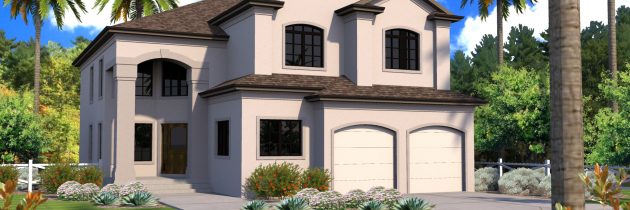An Introduction to Modular Construction
The basic principle of prefab, whereby a home is fabricated in one location and then delivered to another, has been around for at least a few hundred years.
An early example, the Manning Portable Colonial Cottage, provided the means for reliable shelter in British colonial outposts located far from anything that might have resembled a Victorian-era Home Depot.
Between 1908 and 1940, Sears, Roebuck, and Company sold over 70,000 prefabricated house kits by mail to enterprising do-it-yourselfers across North America. These ready-to-assemble homes featured precut wooden components cross-referenced to a blueprint.
Thanks to robust engineering, durable materials, and some good craftsmanship, many of these homes are still in use.
After World War II the United States faced a severe housing shortage, and several ventures attempted to use industrialized factory-built housing to solve the crisis, including Lustron Homes and the General Panel Corporation. The Eames House, in Pacific Palisades, California (1949), explored the idea that a home could be constructed from off-the-shelf industrial parts and harness economies of scale for ready-made components. In the 1970s the U.S. Department of Housing and Urban Development (HUD) sponsored Operation Break-through, which advocated the use of factory-based industrialization and mass production in the national home-building industry as a way to drive down costs and make housing more affordable. Unfortunately, Operation Breakthrough did not break through, and the entrenched method of site-building homes remained in place.
Throughout the 20th century, the promise of prefab captivated architects and designers. Luminaries like Frank Lloyd Wright, Walter Gropius, and Buckminster Fuller were among many who experimented with prototypes intended for mass production—–a goal none of them achieved.
The last decade has seen a resurgence of interest in prefab as entre- preneurial architects redefine the architect-client relationship around a product-based business rather than a service-based practice.
Most of today’s models are manufactured in small quantities to the same codes and with similar materials to site-built houses. The most widely cited benefit of prefab is economy of scale, as compo- nents or entire homes can be produced in large quantities. But this is not a prerequisite for success. There’s value in faster project schedules, fewer weather delays, and more efficient use of materials thanks to optimization and quality control. One of the primary benefits for the buyer is predictability: Predefined design details and construc- tion processes give the client a degree of surety about the outcome that is often absent in custom projects.
Contact US Modular Home Builders for more information on prefab construction!
888-987-6638

